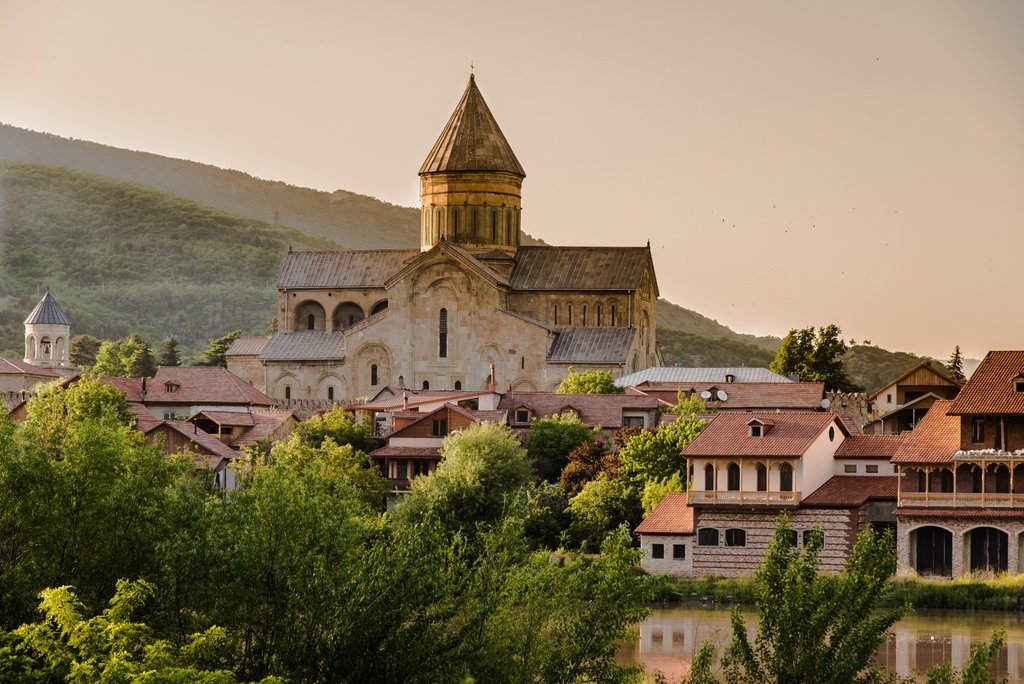The project ToT brings together citizens of Russia, Azerbaijan, Armenia and Georgia to find and publish stories of common roots of each others culture.
One goal of the project is to enable people who are interested in story telling to improve their media skills as citizens journalists with the help of professional trainers. These "citizen journalists" will be trained in journalistic photography, videography, writing and multimedia/social media. The stories will be published online and as a brochure.
The second goal is to provide people from the participating countries - which partly face difficult political situations - the posibility to share, on a non-political basis their opinions and get to know each other better.
Five people from each of the countries will meet each other for ten days, End of August 2018 in the Russian city of Uljanovsk to present there stories of traces of Russian culture from their home countries and to research and present stories from traces of Caucasian life in Uljanowsk. Project language will be english (and russian).
Each country – group from the Caucasus will be joined by a mentor who chooses the participating "citizen journalists" and coordinates the activities of the group in their home countries as well as during the workshop periode in Russia. After the workshop he/she promotes and partialy coordinates the following online story competition in their home countries.
It is also important to know, that the project funding is not 100% certain until now.
I hope to get definite commitments until mid of June....
Three "citizen journalists" and one mentor of each of the following countries:
Azerbaijan, Armenia, Georgia and Russia will meet in August in Uljanowsk/ RU to develope and/or improve their journalistic/media skills in text, photography, videography, multimedia storytelling and social media. We look for participants who are interested in journalism/storytelling and are NOT professional journalists. If they have experiences in some of the journalistic technics that would be fine. They also should speak - in best case – both English and Russian or at least one of those languages.
Beside the technical aspects the project aims to promote intercultural understanding and communication as well as empowerment of the members of the civil society.
Therefor the topic of the workshop is "traces of togetherness", wich means that the participants will focus on different traces of other/foreign cultures in their own surroundings. That means specifically that each caucasian country team will research and produce between one and three stories (photostory and/or video and/or text and/or multimedia) about Russian traces in there home countries, which will be shown at the beginning of the workshop stay in Uljanowsk.
In Uljanowsk each group together with Russian participants will research and produce stories about caucasian traces in the City of Uljanowsk.The results will be shown at the end of the stay in Uljanowsk as well. All of the stories will be published online as well as some of them in a publication after the workshop week. To give that project a perspective and to invite more people to start a carrier as citizen journalist in this four countries there will be an open (citizen journalistic) competition in September where everyone who is interested can participate ...
The tasks for the mentor of each country team are basically
•to find and select the participants who are open, interested and willing to be part of this project
•to coordinate the production of the first story(s) which will be produced before August in each country
•to coordinate (partly) the preparation of the travel
•to coordinate (partly) the stay of the group in Uljanowsk and
•to help with the preparation of the story competition after the stay in Russia in their own countries
For the participants/mentors all travel/visa cost and costs of living in Uljanowsk as well as the costs for the journalistic trainer will be covert. The mentors receive an allowance of 600 Euro for the whole project.
So generally we are looking for open minded people who enjoy exchanging there experiences with others despite of political, ethnical and /or social differences.
If you are interested or if you have more questions please email or call me
(Whats App, Messenger, Viber )!
My mobile number is +49 (0) 179 5420 175
matthias_schumann@yahoo.com
All the Best, Matthias Schumann
Funding is the Kulture Aktiv e.V., supported by Department of Foreign Affairs in Germany.















